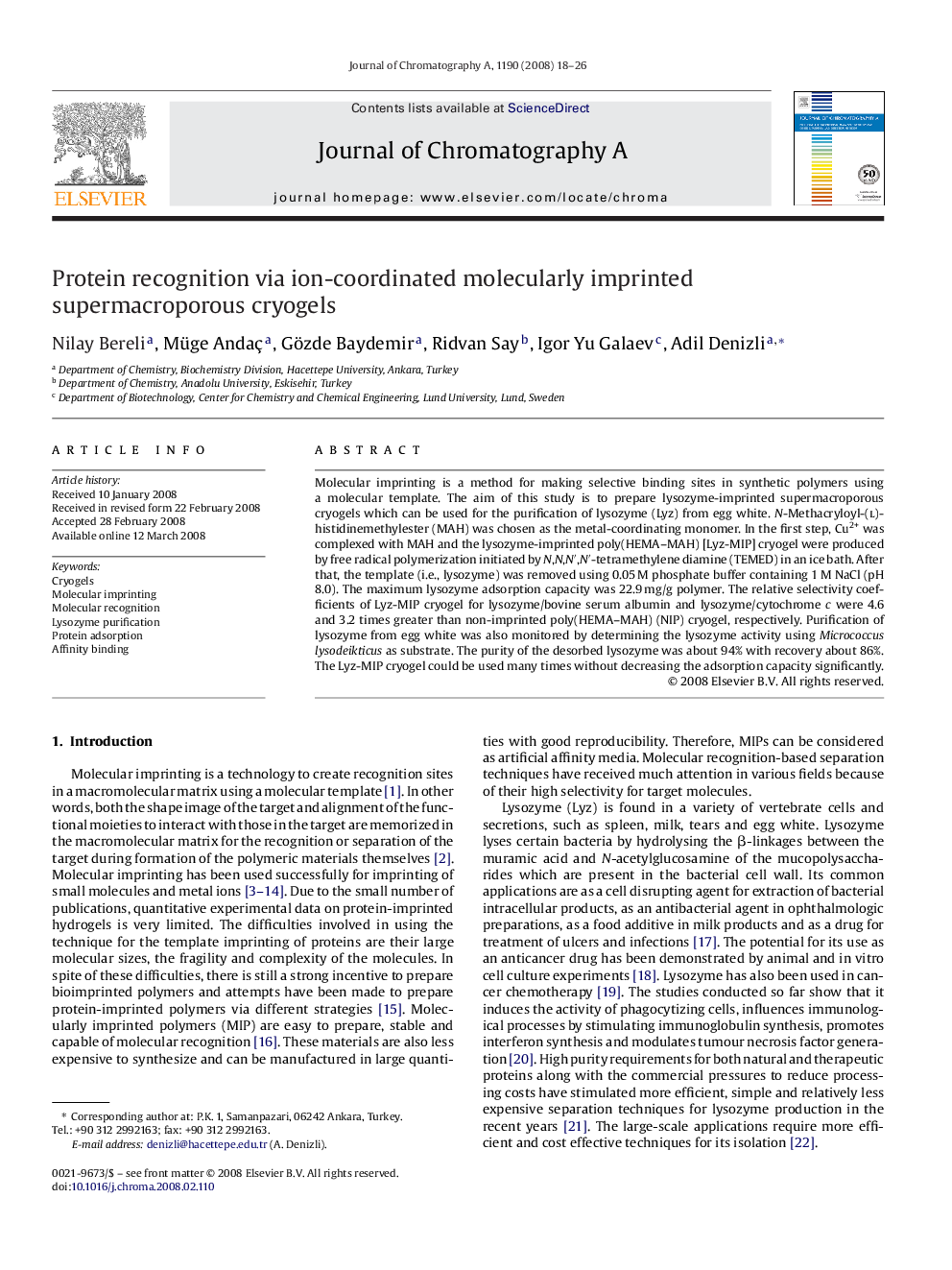| Article ID | Journal | Published Year | Pages | File Type |
|---|---|---|---|---|
| 1205665 | Journal of Chromatography A | 2008 | 9 Pages |
Molecular imprinting is a method for making selective binding sites in synthetic polymers using a molecular template. The aim of this study is to prepare lysozyme-imprinted supermacroporous cryogels which can be used for the purification of lysozyme (Lyz) from egg white. N-Methacryloyl-(l)-histidinemethylester (MAH) was chosen as the metal-coordinating monomer. In the first step, Cu2+ was complexed with MAH and the lysozyme-imprinted poly(HEMA–MAH) [Lyz-MIP] cryogel were produced by free radical polymerization initiated by N,N,N′,N′-tetramethylene diamine (TEMED) in an ice bath. After that, the template (i.e., lysozyme) was removed using 0.05 M phosphate buffer containing 1 M NaCl (pH 8.0). The maximum lysozyme adsorption capacity was 22.9 mg/g polymer. The relative selectivity coefficients of Lyz-MIP cryogel for lysozyme/bovine serum albumin and lysozyme/cytochrome c were 4.6 and 3.2 times greater than non-imprinted poly(HEMA–MAH) (NIP) cryogel, respectively. Purification of lysozyme from egg white was also monitored by determining the lysozyme activity using Micrococcus lysodeikticus as substrate. The purity of the desorbed lysozyme was about 94% with recovery about 86%. The Lyz-MIP cryogel could be used many times without decreasing the adsorption capacity significantly.
